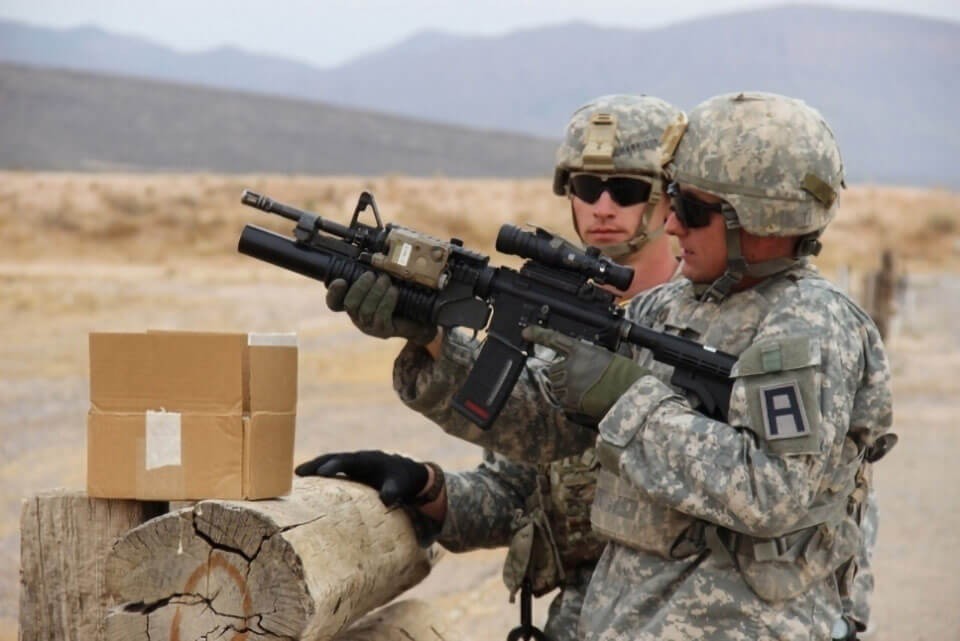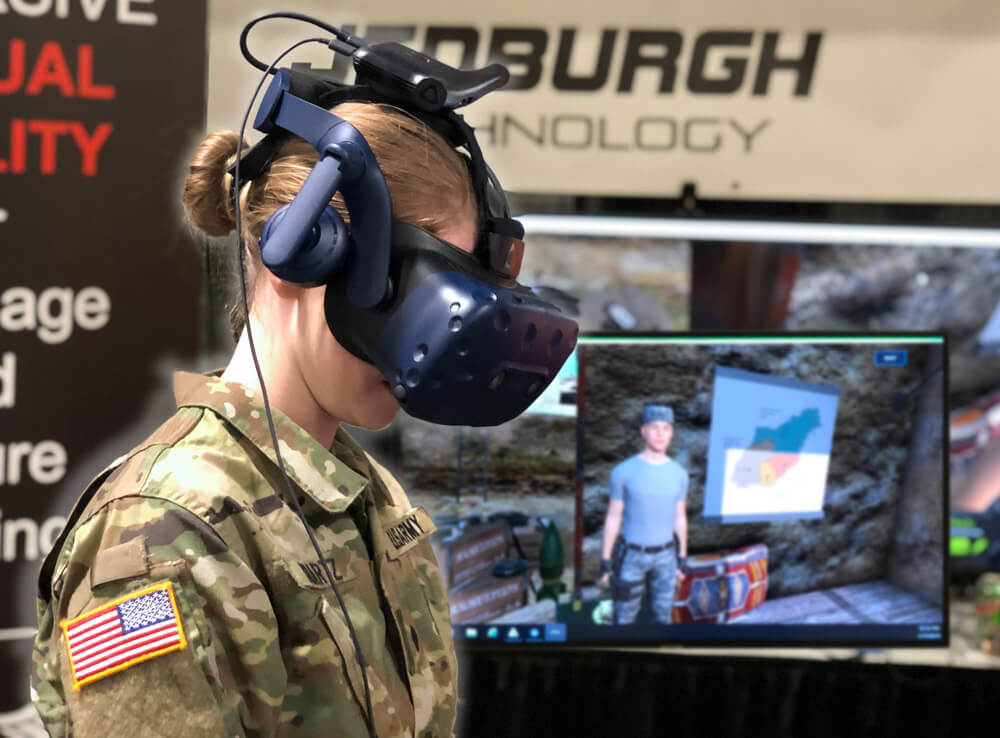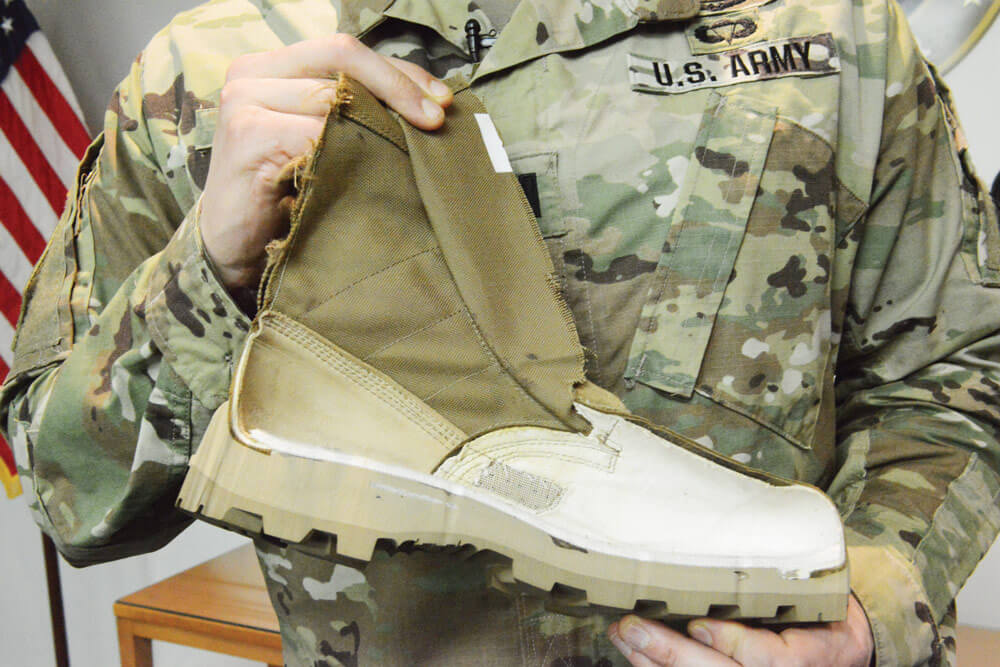New Training Grenades Increase Safety and Accuracy
Field training in the Army is getting a safety assist from the new Target Practice Day/Night/Thermal (TP-DNT) rounds. These 40mm training grenades will perform in the same capacity as a traditional grenade, but without the risk of encountering undetonated rounds that could explode under the foot of an advancing Soldier during training.

The TP-DNT rounds allow for realistic combat training in an environment that is safer than ever before. The grenades, whose development was managed by Program Executive Office (PEO) Ammunition in conjunction with the U.S. Army Armament Research, Development and Engineering Center (ARDEC) and Army Contracting Command, are safe enough to be used in fire and maneuver training, with both 40mm low velocity (LV) and 40mm high velocity (HV) rounds available.
The LV rounds are single-shot grenades that can be fired from M203 and M320 grenade launchers. The HV rounds are designed for firing from the MK19 Grenade Machine Gun.
Christopher Seacord, product director for Medium Caliber Ammunition – part of PEO Ammunition – explains that the new rounds will increase safety and preparedness by facilitating training that more closely mimics how Soldiers will need to respond when in theater. The TP-DNT rounds will allow for fire and maneuver training that currently is too unsafe to perform.
“It’s not that the existing training rounds do not do what they need to – they meet training requirements,” Seacord said. “However, Soldiers want to conduct fire and maneuvers during training, as opposed to training in a static position.”

The advantage of the TP-DNT training round is its lack of energetics – more commonly referred to as the explosives, propellants and pyrotechnics used within a cartridge. Traditional training rounds contain both a fuse and energetics, which together could potentially cause the round to detonate when stepped on.
“What we would like to do is remove the energetic from the cartridge so that even if it did not function down range, and someone stepped on it or picked it up, it would not hurt them,” said Seacord.
In the TP-DNT HV rounds, the fuse is completely removed and the grenade is filled with a capsule of a more stable material that replaces the energetic. The removal of the energetics allows reduction in the overall complexity of the grenade from the 39 parts needed to create a traditional grenade to as few as 10.
In addition to being safer, the less complex round is also cheaper. The Army expects to save $4 per round or more than $8 million in total.
“There’s a huge cost savings associated with this program,” Seacord said. “We can give [Soldiers] a safer round and also make it cheaper [for the Army] – it’s a win-win situation.”

The new HV training rounds will maintain the effects and characteristics of the old rounds, including the ability to see effects at night through the use of night vision goggles and thermal sights. The LV training rounds can currently only be used for day training, as the version with night vision capability is still in development.
“The LV training round has an orange powder that simulates the flash/bang. Unfortunately, it cannot be seen at night, so actual tactical rounds have to be used for LV 40mm grenade night training,” noted Seacord.
Once fully developed, the new LV rounds will have the same standard as the HV rounds and will meet all requirements for effectiveness during day and night training.
“You get a cost savings by not having to use the tactical rounds at night, which are more expensive,” Seacord said. “And Soldiers get a huge training benefit that they don’t currently have.”
After 21 months in the government’s Engineering and Manufacturing Development Phase, in May of 2017 the TP-DNT 40mm program moved into low-rate initial production. Production of the LV 40mm program was awarded to General Dynamics Ordnance and Tactical Systems; and production of the HV 40mm program was awarded to American Ordnance, LLC.
“This cartridge is the next evolution in 40mm grenade launcher training. Its unique signature and expanded training capability better prepares [warfighters] for combat by allowing them to train in a realistic battlefield environment,” said Steve Torma, vice president and general manager for Munition Systems, General Dynamics Ordnance and Tactical Systems.
According to Michael O’Grady, the project manager for 40mm Day/Night/Thermal development at ARDEC, the rounds are currently in testing and will likely be fielded to Soldiers by August 2019.
By STAFF WRITER Keegan Rammel


